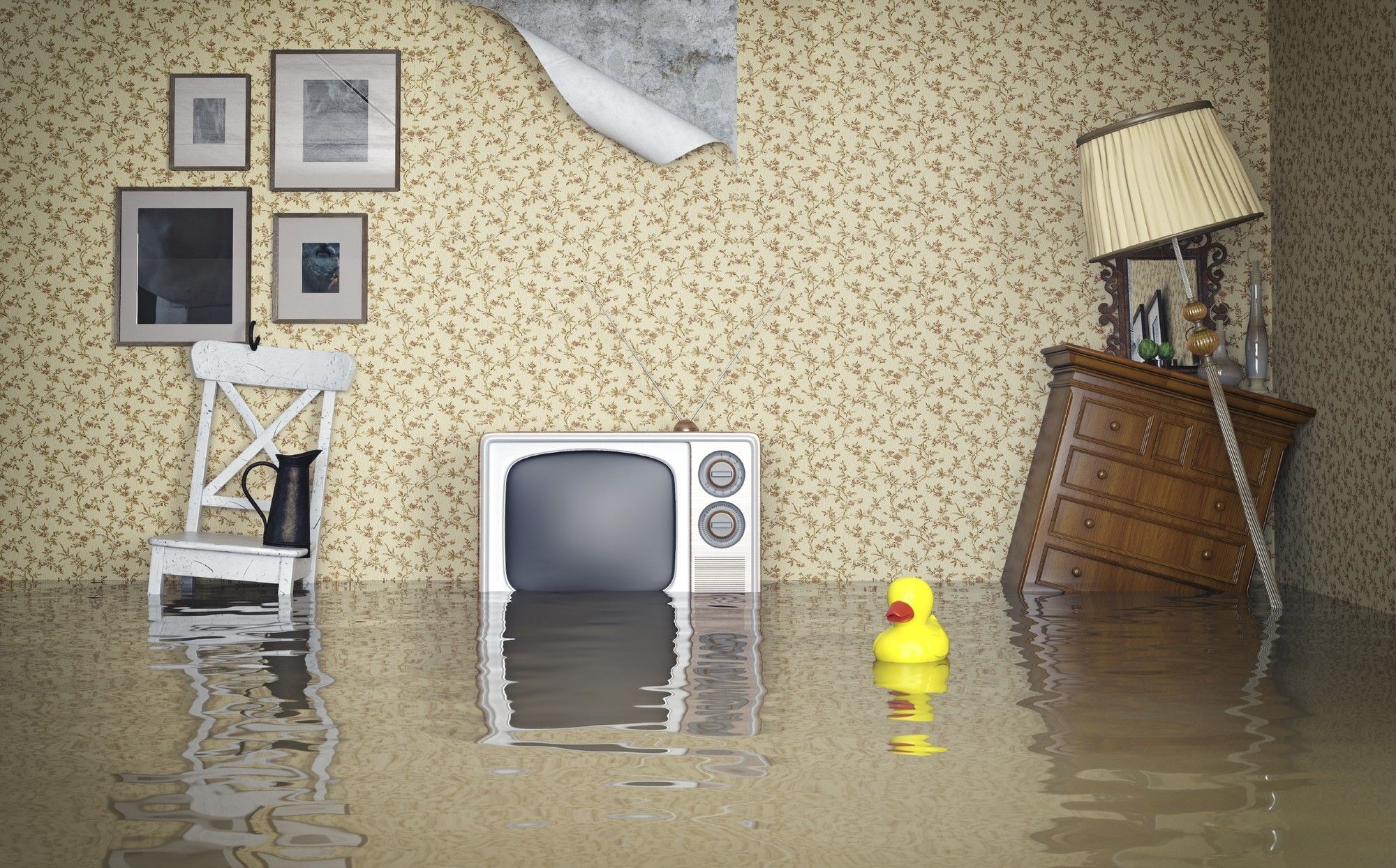Smart Leak Detectors Make You Aware If There's Water Everywhere
California doesn't have enough. In Flint, Michigan, residents can't drink it at all. Your concern? Keep water in your pipes until you decide to turn on the tap.
When water inadvertently escapes your plumbing, that damage is the number one homeowner insurance claim—more than fire or theft. These aqueous accidents, of course, can stem from floods and storms. Still, most involve burst washing machine hoses, bathroom or roof leaks, and general toilet, water tank, hot water tank or refrigerator piping malfunctions. The result? Water damage can run you in the thousands of dollars.
Sure, you can place dumb water detectors that emit an alarm when pools appear, like smoke or C02 detectors. But these detectors are only effective if you're home to hear the alarm and can take action quickly.
If you're often out of the house, on the road, simply at work, or own a second home, you want one of the growing number of smart leak detectors on the market today. Unlike an alarm no one may hear, a smart leak detector can transmit an emergency alert to your smartphone and—in some cases—act before an unwanted aquatic event turns into an economic calamity as well.
Smart leak detectors are, more accurately, accumulated water detectors. They're small, soap-sized white boxes that you place on a floor near a water-bearing fixture, usually running on long-lasting batteries, similar to a smoke or CO2 detector. If the water detector detects water—where water shouldn't be—the device sends an alert to your smartphone and may also trigger a siren or alarm. Many detectors also let you set a parameter, such as a minimum amount of water before an alert is triggered. That means you aren't alarmed by a simple spill or overflow.
Some leak detectors offer more than after-the-spill sensors. Certain devices, when wirelessly connected to other gear, can automatically close a pipe valve to stem the flood. Other detectors can read wide temperature variations in your home, doubling as fire or ice sensors as well.
Higher-end leak detectors
Unfortunately, most leak detectors are tied to specific smart home systems. One comprehensive independent smart spillage sensor and stopper, however, is leakSMART. Its system consists of a ZigBee-compatible leakSMART System Hub, a small square sensor powered by three AAA batteries, and an electronic motorized brass water ball, which acts as an automatic water shutoff valve.
As with any smart leak detector, you can place detectors in multiple potential plumbing problem positions. If one of the detectors senses serious secretions, the device emits a siren, sending an alert to both you and the hub. The hub then sends a shutoff command to the valve. According to the company, the entire detection-to-shutoff process happens within 5 seconds. You can also manually close the valve from the leakSMART app. Tip: If you're Bob Vila, leakSMART recommends installing the valve professionally.
leakSMART is designed as a whole-home system—you have to buy a complete leakSMART kit ($699), which includes the hub, five detectors and the water shutoff valve. Still, while pricey, the kit is far less expensive than the cost of any potential water damage. Individual/additional leak detectors are another $69 each. Unfortunately, neither the hub nor the leakSMART Valve is sold separately.
Less expensive models
One of the more robust—and cheaper—all-purpose leak detectors is the Fibaro Flood Sensor ($60), a small detector that also can sense icing or fire. Fibaro runs on AC or batteries (you get 2.5 years on a single 9-volt). Fibaro automatically closes an installed electro-magnetic solenoid valve if you add a Fibaro Relay Switch ($62). The Flood Sensor and Relay Switch are designed to work with the overall Fibaro system, but can be tied into a Z-Wave system such as the Staples Connect.
A little less expensive—but a little less expansive—is the Samsung-owned SmartThings Water Leak Sensor ($40), which requires the SmartThings Hub ($99). Placed on a floor, this CR2 battery-powered (and ZigBee compatible) mountable detector simply lets you know if there's unwanted water or moisture, or extreme temperature shifts, and either sends you an alert and emits an alarm.
For Insteon system owners, there's its Leak Sensor ($35). The battery supplies 10 years of detection, according to the company, and the sensor requires the Insteon hub ($80). Similar to the Fibaro, you can add an Insteon remote control jack ($46) and a Water Shutoff Valve ($100) to shut off the water supply in case of leakage automatically.
For Wink/ZigBee ecosystem owners, there's the GE Overflow smart water sensor ($120), a hockey puck-sized sensor you attach to a wall and a six-foot sensor cable to reach to the floor behind a fixture. The device will run for two years on a couple of standard AA batteries. However, you'll need a Wink hub. Quirky, the folks behind Wink, just got bought by an outfit called Q Holdings, so the availability of this sensor may be currently limited for the time being.
The basic Utilitech White Flood Sensor ($30) is designed for the Lowe's Iris system. Instead of putting it on the floor, you mount the three AAA battery-operated box on the wall and trail the connected 3-foot sensor cable down to the floor to watch for water. The device then sends an alert if H2O is detected. (There's no audible alarm.) Serving a similar simple sensor service for Staples Connect is the Aeotec Water Sensor ($35).
Owning a smart leak detector is often not front of mind when protecting a home until you've been personally acquainted with water damage and its expensive aftermath. It's better not to need that experience in the first place. Your home will thank you, your insurance company will thank you, and so will your checkbook.
Moen White Flo Smart Water Leak Detector, Water Sensor Alarm for Home, 3-Pack, 920-005
